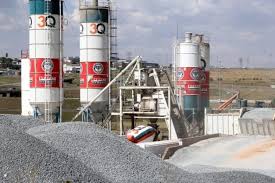Farmers take advantage of early rains get, down to business
More than 17 000 hectares have been planted so far as farmers move forward quickly following the recent rains that gave enough moisture to allow planting in a few areas while distribution of inputs is in progress so all farmers will have their seed and fertiliser ready when enough rains have fallen to allow planting.
While it is very early days yet in the season, more than 15 000 hectares have been planted to maize, 1 589 hectares pearl millet, 921 hectares to cotton, 621ha to soyabeans, and 195ha to sorghum.
The central parts of the country have received the highest rainfall since the season started.
Mvuma has received 144 mm with 134 mm for Belvedere (Harare) and 128 mm for Maryland.
But farmers in most parts of the country had by November 22, received less than 30mm not enough to plant.
Most of the country is still below normal save for some areas in Midlands and Mashonaland Central, which have received normal, and above normal rainfall.
This was what was seen last season, considered excellent by modern standards, with a late start and then an early finish.
Even in good years Zimbabwe sees rains starting later than was expected in past times, and this has been attributed partly to global warming. The rains that have fallen have affected the harvesting of the late-planted wheat crop.
In the weekly update, Agritex director Mr Stancilae Tapererwa said farmers had planted 15 395 hectares of maize with most of these farmers self-financed or supported by the private sector.
The update shows that 11 884 hectares were planted by self-financed farmers and those supported by the private sector, while 2 811 hectares were planted under the Pfumvudza/Intwasa programme. Farmers planted 700 hectares of maize under Command Agriculture.
The private sector and self-financed farmers have planted 1 535 hectares of sorghum, 621 hectares of soyabeans and 921 hectares of cotton.
Meanwhile, inputs deliveries to the GMB and distribution to farmers has continued.
By Friday last week the GMB had received more than 68 000 tonnes of fertiliser, 15 000 tonnes of seed and more than 7 000 tonnes of lime for different programmes.
Of these, GMB has distributed 8 250 tonnes of maize seed, 415 tonnes for sorghum, 77 tonnes for pearl millet, 649 tonnes for soyabeans, 98 tonnes for groundnuts and 15 tonnes for sunflower.
GMB has also distributed 42 055 tonnes of basal fertiliser and 588 tonnes top dressing and 3 457 tonnes of lime.
The summer programme for the present season is to build on last year’s successes and push forward.
Under the programmes conservation agriculture principles will climate proof the Presidential Input Scheme and this is backed by provision of inputs.-The Herald











